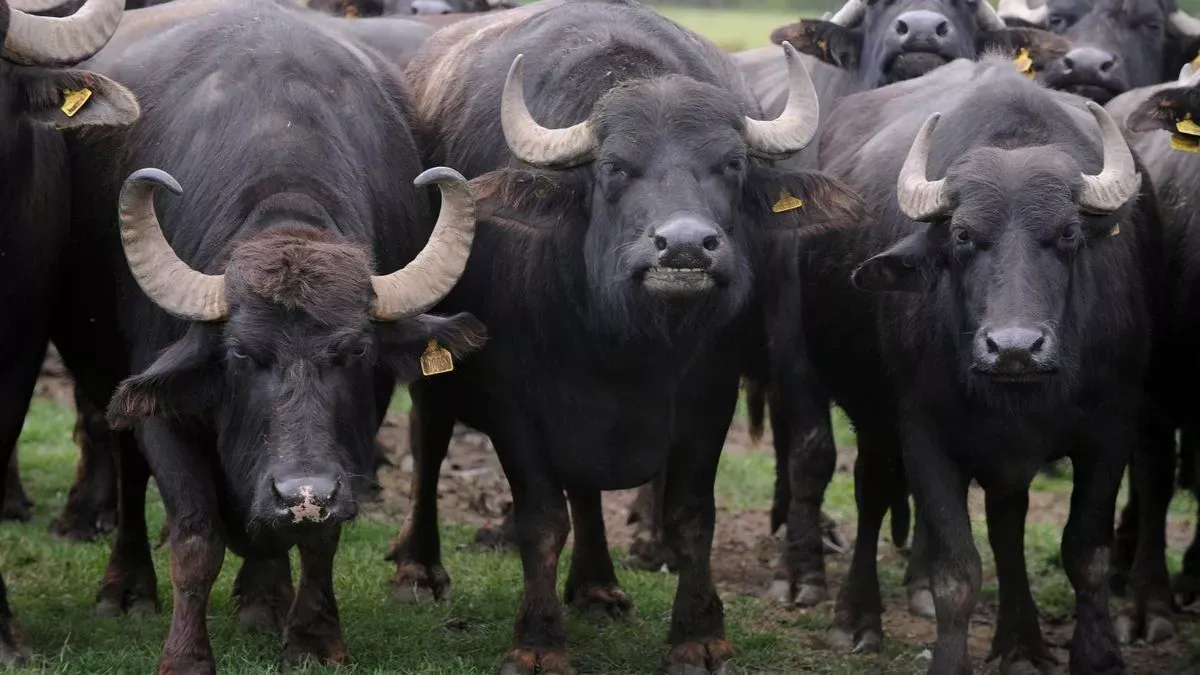In a recent incident that captivated the residents of Pleasant Hill, Iowa, a water buffalo escaped while being transported for slaughter, leading to a multi-day pursuit and eventual rescue. The event, which occurred in August 2024, culminated in the owner facing legal consequences and the animal finding a new home.
The escaped water buffalo, affectionately named PHill after the town, roamed the suburban area of 11,000 residents for several days. Law enforcement attempted to capture the animal, resulting in PHill being shot but managing to evade capture. Eventually, with the assistance of zoo personnel and animal rescue workers, PHill was successfully tranquilized.
On October 5, 2024, the owner pleaded guilty to having an animal at large and was fined $105 plus court costs. As a result of the incident, the owner relinquished custody of PHill and two other water buffaloes, now named Sal and Jane, to an animal shelter.
PHill is currently recovering at a large animal hospital, where treatment is being provided for an infected gunshot wound. The Iowa Farm Sanctuary reports that the animal's condition is improving.
Water buffaloes, native to Southeast Asia, have a rich history of domestication spanning over 5,000 years. These impressive creatures can weigh up to 2,650 pounds (1,200 kilograms) and are the largest members of the Bovini tribe, which includes yaks, bison, and various wild cattle species. Known for their distinctive curved horns that can grow up to 5 feet long, water buffaloes have been introduced to many parts of the world beyond their native habitat.
These animals play significant roles in various cultures and economies. In some Hindu traditions, they are considered sacred. Their milk is used to produce the popular Italian cheese, mozzarella di bufala. Water buffaloes are also valued for their strength and endurance, often used as draft animals in agriculture, particularly in rice paddies, and even in logging operations in Southeast Asia.
Water buffaloes are social creatures that typically live in herds and can form strong bonds with their human caretakers. They are excellent swimmers, capable of crossing rivers and lakes with ease. Their preference for wallowing in mud or water serves to cool them down and protect against insects.
With a global population estimated at around 200 million, water buffaloes have proven to be versatile and adaptable animals. They are resistant to many parasites and diseases that affect cattle and are excellent at converting poor-quality vegetation into milk and meat. Their meat is leaner than beef and is popular in some cuisines.
As herbivores with a complex four-chambered digestive system similar to cows, water buffaloes primarily feed on grass and aquatic plants. They have a lifespan of 25-30 years in the wild and are known for their thick, sparse coat that appears black or dark gray.
The story of PHill the water buffalo serves as a reminder of the complex relationships between humans and animals, as well as the challenges that can arise when domesticated animals find themselves in unfamiliar environments. As PHill continues to recover, the incident has sparked conversations about animal welfare and the responsibilities of animal owners in ensuring the safety of both their animals and the community.
"PHill is recovering well from the gunshot wound. We're grateful for the community's support and the opportunity to provide a safe haven for these magnificent animals."
